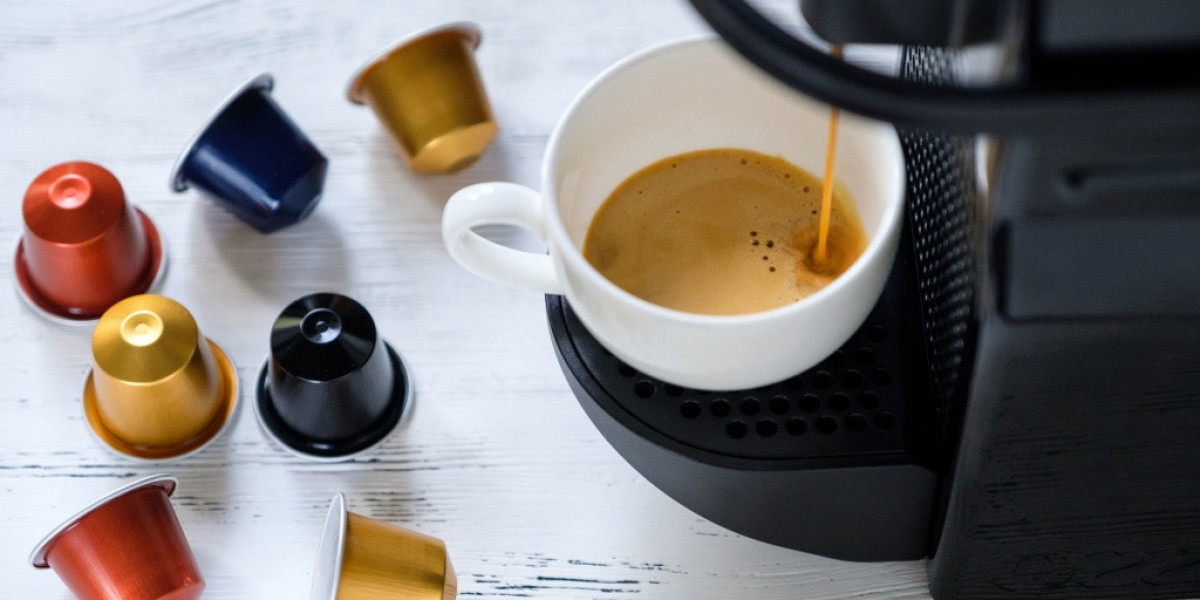The coffee capsule market has witnessed remarkable growth in recent years, driven by consumer demand for convenience, variety, and quality. However, despite its rapid expansion, the market faces several hindrances that challenge sustained growth and broader adoption. These obstacles range from environmental concerns to cost barriers and technical limitations, impacting both consumer acceptance and industry innovation. Understanding these hindrances is crucial for stakeholders seeking to navigate and overcome them effectively.
Environmental Concerns and Waste Management
One of the most significant hindrances to the coffee capsule market is environmental impact. Traditional coffee capsules are typically made from plastic or aluminum, materials that pose serious waste management challenges. Many capsules are not biodegradable or easily recyclable, leading to growing criticism from environmentally conscious consumers and advocacy groups.
The accumulation of single-use capsules in landfills contributes to pollution and resource depletion. This environmental drawback has sparked backlash and hesitancy among consumers who want to enjoy convenient coffee without compromising ecological responsibility.
Manufacturers face pressure to develop sustainable alternatives such as compostable capsules or reusable designs, but these innovations can be costly and slow to reach mass adoption. Until more eco-friendly options become mainstream, environmental concerns remain a major barrier to market growth.
High Cost and Price Sensitivity
Another key hindrance is the relatively high cost of coffee capsules compared to traditional ground coffee or instant varieties. While capsules provide convenience and consistent quality, their price per cup tends to be significantly higher, which can deter price-sensitive consumers.
This price barrier limits penetration in price-conscious markets and among consumers who prioritize affordability over convenience. Additionally, the cost of compatible coffee machines can be prohibitive for some buyers, restricting market growth primarily to middle- and upper-income segments.
Brands face the challenge of balancing quality, convenience, and price competitiveness while maintaining profitability. Until more affordable capsules and machines become available, high costs will remain a hindrance.
Machine Compatibility and Brand Lock-In
The coffee capsule market is fragmented by the lack of universal compatibility among machines and capsules. Most brands design their capsules to work exclusively with their proprietary machines, creating brand lock-in.
This exclusivity limits consumer choice and flexibility, as buyers must commit to one brand’s ecosystem, often at a higher cost. It also frustrates consumers who own multiple machines or want to experiment with different capsule brands without purchasing new equipment.
While third-party manufacturers produce compatible capsules, legal and patent disputes sometimes restrict availability. The absence of a universal standard for capsule compatibility remains a technical and market hindrance.
Consumer Skepticism Over Quality and Taste
Despite the convenience of coffee capsules, some consumers remain skeptical about the quality and taste compared to freshly brewed coffee from beans or grounds. Purists argue that capsule coffee lacks the depth and richness of traditional coffee-making methods.
This skepticism can slow the adoption rate among discerning coffee drinkers who prioritize flavor over convenience. Overcoming this perception requires brands to educate consumers about advances in capsule technology and promote premium, specialty coffee options within the capsule format.
Building trust in capsule coffee quality is essential for expanding the market beyond casual or convenience-focused consumers.
Environmental Regulations and Compliance Costs
Increasingly stringent environmental regulations aimed at reducing single-use plastics and waste pose regulatory challenges for the coffee capsule market. Companies must invest in research and development to meet new standards, such as recyclable or biodegradable packaging requirements.
Compliance with these regulations often involves higher production costs and operational changes. Smaller brands may struggle to bear these costs, limiting competition and innovation in the market.
Adapting to evolving regulations is necessary but creates short-term hindrances to growth and profitability for many players.
Supply Chain and Raw Material Challenges
The coffee capsule market relies heavily on high-quality coffee beans and specific packaging materials. Fluctuations in raw material availability and prices, influenced by climate change, political instability, and economic factors, can disrupt supply chains.
Packaging materials such as aluminum and specialty plastics are also subject to cost volatility and supply constraints. Such disruptions can delay production, increase costs, and impact product consistency.
These supply chain vulnerabilities pose operational hindrances, especially for brands committed to sustainable sourcing and premium quality.
Limited Consumer Awareness and Education
Though coffee capsules are popular in certain regions, awareness and understanding of the product’s benefits and varieties remain limited in others. Consumers unfamiliar with capsule systems may hesitate to adopt them due to lack of knowledge about usage, machine compatibility, or product advantages.
Lack of effective consumer education slows market penetration, especially in emerging economies where traditional coffee preparation methods dominate.
Brands and retailers must invest in educational campaigns to address misconceptions, demonstrate convenience, and highlight quality to overcome this barrier.
Environmental Impact of Coffee Farming
Beyond capsules themselves, the broader coffee supply chain faces sustainability challenges related to farming practices. Environmental degradation and unethical labor practices associated with coffee production can negatively impact brand reputation.
Consumers increasingly demand ethically sourced coffee, which complicates sourcing decisions and may increase costs. Brands not aligning with these values risk losing market share.
Conclusion
While the coffee capsule market presents enormous growth potential, it is also beset by several hindrances that slow its progress. Environmental concerns, high costs, machine compatibility issues, consumer skepticism, regulatory pressures, supply chain vulnerabilities, and limited awareness all challenge the market’s expansion.
Addressing these obstacles requires innovation in sustainable materials, cost management strategies, consumer education, and collaborative industry efforts to establish standards and transparency. By overcoming these hindrances, the coffee capsule market can continue its upward trajectory, balancing convenience and quality with responsibility and inclusivity.
Companies that proactively tackle these challenges will be better positioned to capture emerging opportunities and secure long-term success in this vibrant market.









